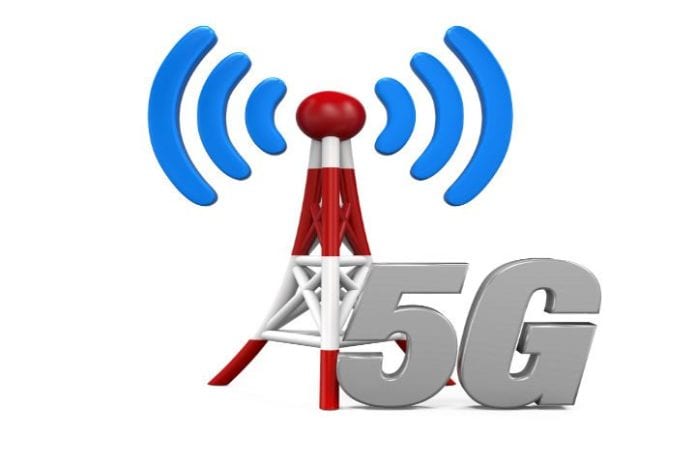Developments around millimeter wave spectrum in support of 5G services is expected to see considerable attention in 2017.
Editor’s Note: With 2017 now upon us, RCR Wireless News has gathered predictions from across the mobile telecommunications space on what they expect to see in the new year.
During the last year, “5G” and millimeter wave spectrum have dominated the headlines, and this momentum will only increase in 2017. Demand for higher capacity networks is surging, fueled by new verticals, the digital economy, smartphone proliferation and changing consumer demands.
However, while high-profile 5G concepts and trials grab the headlines, we must not take our eye off the immediate opportunity millimeter wave spectrum now offers to improve services for the American consumer.
In 2017, we expect the 5G discussion to get a healthy dose of reality as carriers look to capitalize on the progress made during 2016, and utilize the latest millimeter wave techniques to improve connectivity to the 34 million Americans who still lack access to broadband speeds of at least 25 megabits per second.
5G gets real
While some use cases will take years to come to market, we have already made great progress in the move towards 5G fixed wireless. Several major advancements have brought this a lot closer in 2016, including ground-breaking innovations in millimeter wave technology and the Federal Communications Commission’s landmark Spectrum Frontiers ruling, which unlocked high-band spectrum. This provides carriers with an immediate opportunity to leverage existing millimeter wave technology that can easily scale to deliver wide-scale access to the high-speed services envisaged for 5G.
Some U.S. carriers are already ahead of the curve, and in 2016 used millimeter wave to roll out high-capacity fixed wireless networks – unlocking the spectrum’s vast capacity to offer homes and businesses fiber speeds over the air. Pre-5G projects like this are paving the way to better make use of the country’s untapped spectrum assets, accelerating access to faster and higher-grade communications for homes and businesses.
The availability of wide channels of millimeter wave, combined with more efficient technology, has created a new and highly compelling business case for carriers to utilize high frequencies as a key component of their growth strategy. We expect more carriers to adopt this approach in 2017, which has the ability to scale to multigigabit-per-second 5G speeds as the field-proven technologies of today scale in line with consumer demand.
A boost to home broadband
Advances in technology will see complementary millimeter wave strategies emerge in 2017, which will upgrade legacy wireline and provide a boost to residential wireless connections.
Ubiquitous coverage of licensed point-to-multipoint millimeter wave, for example, can be supplemented by an optional unlicensed last mile. Strategies such as this will enable carriers to leverage the high sector capacity of licensed millimeter wave to serve a range of new use cases. Whereas the licensed millimeter wave layer serves enterprises and multiple dwelling units, an additional unlicensed last mile offers low-cost connectivity for lower data rate sites, such as homes or smart city applications.
The emergence of these millimeter wave heterogeneous networks offer carriers a new and highly flexible strategy to address new markets from a single common network, bringing licensed-grade services to more American consumers than has never been possible before.
Millimeter wave – we’ve only just scratched the surface
Over the last two years, the industry has come a long way in proving the value of historically under-utilized frequencies, creating more innovative approaches to unlocking their potential. New technologies at 28 GHz, 39 GHz, 60 GHz, 70 GHz and 80 GHz bands have already been used to advance communications, but it is unlikely to stop there. We expect further innovation in 2017 that will unlock more millimeter wave frequencies, providing a transformational path to high-capacity 5G. We also expect vendors to advance technologies in commercially used millimeter wave bands utilizing the wider 200-megahertz channel sizing enabled by the Spectrum Frontiers vote.
With carriers and vendors rapidly evolving to meet market demands, 2017 will see seminal millimeter wave announcements and product launches. 2017 is set to be an instrumental year on the road to 5G and we’re looking forward to the developments it will hold.
Mark Ashford has more than 20 years of experience in the wireless industry, gained in a range of multinational commercial, technical and strategic roles. As VP North America for CBNL, Mark is responsible for leading U.S. business and developing CBNL’s transformational business partnership initiatives. Before joining CBNL, Ashford worked for both for AT&T/Lucent Technologies for 12 years as well as for Apertio Ltd., where he supported the successful sale and integration of the company in Nokia. He is an associate member of the Chartered Institute of Management Accountants and has a BSC in Physics from Imperial College, London.

